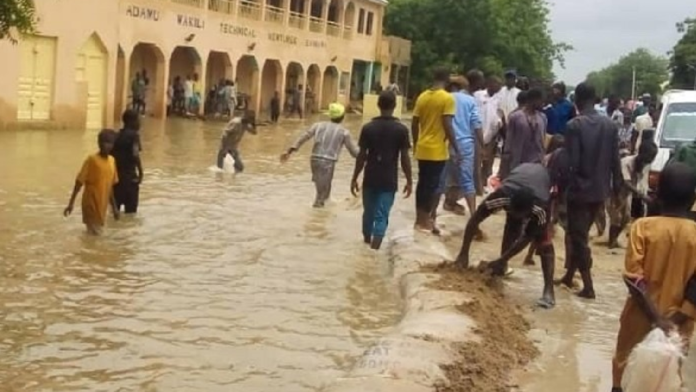The Jigawa State Emergency Management Agency (JISEMA) on Sunday distributed relief items to 400 people displaced by flood in Buji Local Government Area (LGA) of Jigawa.
The items provided by the agency include 300 bags rice (10kg), 900 pieces of spaghetti, 10 bags of garri (50kg), 10 bags of maize (100kg), three bags of groundnut cake (100kg), 100 blankets, 100 mats and 300 mosquito nets.
According to reports, the Thursday flood wreaked havoc in Gantsa, the council’s headquarters and Gwadayi village.
Dr Haruna Mairiga, the Executive Secretary of JISEMA, said that the victims had been evacuated and were being camped in a primary school in the area.
Mairiga said healthcare services and safe drinking water had been provided in the camp.
“We are here to provide succour to the flood victims in Gantsa and Gwadayi. 400 of them will benefit from these items.
”I want to assure those affected that more relief materials will be coming in due course. We informed the National Emergency Management Agency (NEMA) about this incidence”, he said.
In his remarks, the Director of Administration and General Services of the council, Mr Shuaibu Na’aba, commended the state government for its quick response to the plight of the victims.
Na’aba, who is also the Caretaker Chairman of the council, said it would also assist the victims soon.
Also speaking, the District Head of Gantsa, Alhaji Sabo Bello, thanked the government for the gesture and he also assured that the items would be distributed fairly among the victims.
Bello noted that the flood affected over 1,000 rice and guinea corn farms and the items were stored in the palace of the District Head for onward distribution to the victims.
In July, NEMA said 19 LGAs of Jigawa were in high- and moderate-risk flood areas.
NEMA listed the affected LGAs as Kaugama, Hadejia, Auyo, Ringim, Taura, Miga, Jahun, Guri, Kirikasamma, Malammadori, Gumel, Gwaram, Dutse, Birniwa, Kiyawa, Kafinhausa, Suletankarkar, Babura and Maigatari.
According to a report by NEMA, in Jigawa, the flood ravaged 138,442.36 hectares of farmlands and displaced 1,554 farming communities across 22 local government areas of the state



